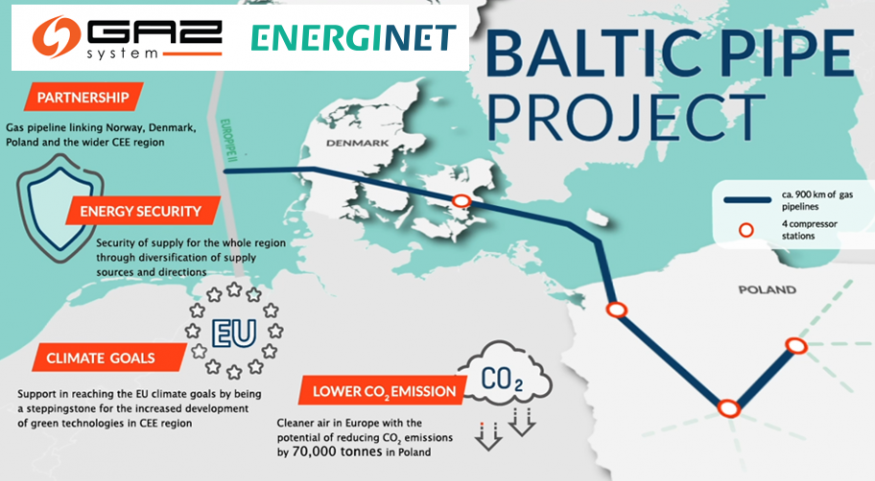- Our DNA
- Innovation Lab
- Publications
- Energy Transparency
- Press Corner
- Events
- Contact
- Subscribe
- Membernet
- My account
- Search
- Follow us at LinkedIn
- Follow us on Twitter
- Follow us on Instagram

The Baltic Pipe project, that will be effective by October 2022, aims at creating a new gas supply corridor in the European market, from Norway to Denmark and Poland, as well as to end-users in neighbour countries. At the same time, it will enable the supply of gas from Poland to the Danish market
The project is being developed in collaboration between the Danish gas and electricity transmission system operator Energinet and the Polish gas transmission system operator GAZ-SYSTEM, and is co-financed by the Connecting Europe Facility of the European Union.

According to the Climate report[1] published by Baltic Pipe Project, this project could bring climate benefits by 2022, among which:
Baltic Pipe project can be used to produce about 60 TWh of electricity. This can then be combined with another 40 TWh wind (and/or solar) for a total of 100 TWh. This corresponds to an increase of 60% in electricity generation compared to today. This clean electricity can be used to replace coal in electricity generation, oil and wood in buildings using electrically powered heat-pumps.





































































